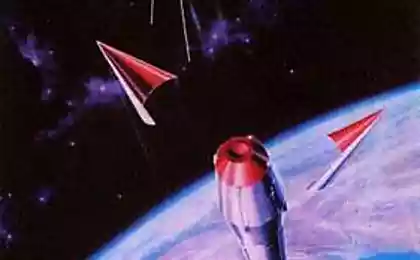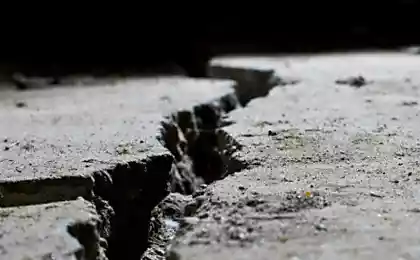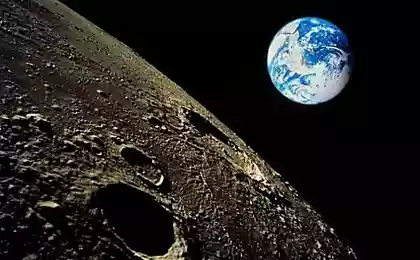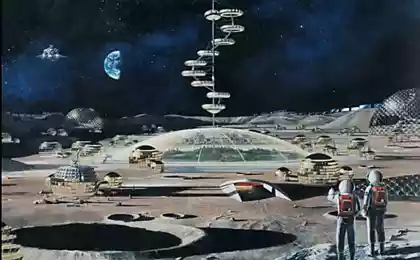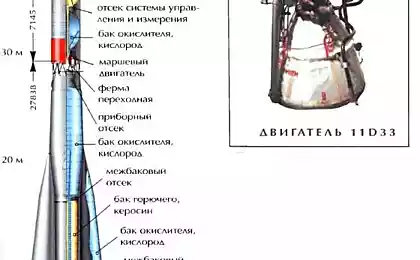832
Is the moon artificially created body?
Is the Moon hollow? What if it was created artificially, and a thick layer of dust covers over billions of years of its metal surface?
Such theories attracted the interest of many, to the extent that, as scientists continue to explore the moon and learn new facts about its structure and processes occurring in it.
Let's look at some strange features of the moon.
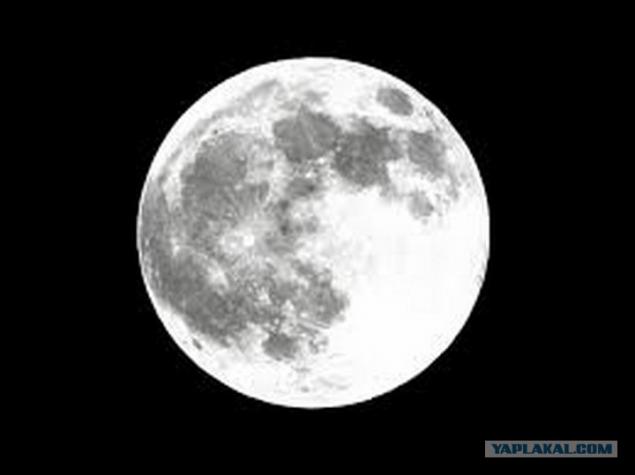
1. Reverb: The Moon is hollow?
NASA hit the Moon in 1969 - so that the mission Apollo 12 astronauts were able to measure the resulting seismic waves. These shock waves shocked researchers.
Vibration lasted for an hour and started as a small wave, is slowly gaining ground - it is very different from any seismic phenomena ever recorded on Earth.
Dr. Ross Taylor, who participated in the study samples collected mission Apollo 11, said that these are the result of long reverberation extremely dry nature of the lunar soil. "As far as we know today, there is no moisture on the moon, and nothing absorbs occurring vibrations. Moon's surface is covered with stones, and it allows you to send seismic waves, not repaying them as it would occur on Earth. In fact, this is a consequence of extreme dryness of the Moon ».
An astronomer at the University of Stounibruk Suniti Karunatillaki believes that if the moon was hollow, when taking into account its size, it would be enough dense to ensure that the force of gravity, which it creates.
2. Abnormal orbit
Italian physicist Lorenzo Iorio published in the anthology «Monthly Notices of the Royal Astronomical Society» 2011 article on "abnormal behavior" of the moon.
According to him, a small constant changes in lunar orbit can not be explained within the current astrophysical paradigm. Eccentricity of the lunar orbit is growing. (Eccentricity - a measure of the deviation of the orbit from a perfect circle).
The conclusions of his article, Iorio writes: "The question of finding a satisfactory explanation for the anomalous behavior of the eccentricity of the Moon to date remains open».
3. Convex lunar craters
Some lunar craters curved (ie, the surface is curved outwards) and not concave, which, in the opinion of many, indicates the presence of a solid (artificial) membrane under the surface layer of the soil. When a meteor crashes into the moon, it is logical to expect her appearance is concave crater.
Charles Wood of the Division of Geological Sciences at Brown University, investigated the matter and in 1978 suggested that the curved craters created, apparently, the lava that once seeped through cracks on the surface of the moon.
4. Moon stabilizes the Earth wobble
It is not known whether it is done by someone intends to or not - but the Moon has a considerable service to the world.
"Moon stabilizes the Earth wobble, which leads to the formation of our planet a more stable climate," explains NASA.
Dr. Eric Christian and Beth Barbier from NASA talk in more detail: "Luna adds resistance to rotation of the Earth in the form of hot flushes - ocean and inland. This additional resistance stabilizes the rotation of our planet. It also slows down a bit it, which in turn slightly increases the duration of the day in the world ».
5. Matches in size
If you look at the parameters of the Moon, the Sun and the Earth, we see the same numbers. The diameter of the Sun is about 400 times larger than the diameter of the moon; and the moon is about 400 times closer to Earth than the sun.
The diameter of the Sun is approximately equal to the diameter of Earth 108; the distance between the Earth and the Sun is approximately equal to the diameter of the Sun 108.
The diameter of the Moon: 3, 400 km
The diameter of the Sun: 1, 391, 000 km
Earth's diameter: 12, 756 km
The distance from the Earth to the Moon: 360 000 km
The total distance between the Sun and the Earth (sometimes more, sometimes less): 149, 600, 000 km
source
That something like
Source:
Such theories attracted the interest of many, to the extent that, as scientists continue to explore the moon and learn new facts about its structure and processes occurring in it.
Let's look at some strange features of the moon.

1. Reverb: The Moon is hollow?
NASA hit the Moon in 1969 - so that the mission Apollo 12 astronauts were able to measure the resulting seismic waves. These shock waves shocked researchers.
Vibration lasted for an hour and started as a small wave, is slowly gaining ground - it is very different from any seismic phenomena ever recorded on Earth.
Dr. Ross Taylor, who participated in the study samples collected mission Apollo 11, said that these are the result of long reverberation extremely dry nature of the lunar soil. "As far as we know today, there is no moisture on the moon, and nothing absorbs occurring vibrations. Moon's surface is covered with stones, and it allows you to send seismic waves, not repaying them as it would occur on Earth. In fact, this is a consequence of extreme dryness of the Moon ».
An astronomer at the University of Stounibruk Suniti Karunatillaki believes that if the moon was hollow, when taking into account its size, it would be enough dense to ensure that the force of gravity, which it creates.
2. Abnormal orbit
Italian physicist Lorenzo Iorio published in the anthology «Monthly Notices of the Royal Astronomical Society» 2011 article on "abnormal behavior" of the moon.
According to him, a small constant changes in lunar orbit can not be explained within the current astrophysical paradigm. Eccentricity of the lunar orbit is growing. (Eccentricity - a measure of the deviation of the orbit from a perfect circle).
The conclusions of his article, Iorio writes: "The question of finding a satisfactory explanation for the anomalous behavior of the eccentricity of the Moon to date remains open».
3. Convex lunar craters
Some lunar craters curved (ie, the surface is curved outwards) and not concave, which, in the opinion of many, indicates the presence of a solid (artificial) membrane under the surface layer of the soil. When a meteor crashes into the moon, it is logical to expect her appearance is concave crater.
Charles Wood of the Division of Geological Sciences at Brown University, investigated the matter and in 1978 suggested that the curved craters created, apparently, the lava that once seeped through cracks on the surface of the moon.
4. Moon stabilizes the Earth wobble
It is not known whether it is done by someone intends to or not - but the Moon has a considerable service to the world.
"Moon stabilizes the Earth wobble, which leads to the formation of our planet a more stable climate," explains NASA.
Dr. Eric Christian and Beth Barbier from NASA talk in more detail: "Luna adds resistance to rotation of the Earth in the form of hot flushes - ocean and inland. This additional resistance stabilizes the rotation of our planet. It also slows down a bit it, which in turn slightly increases the duration of the day in the world ».
5. Matches in size
If you look at the parameters of the Moon, the Sun and the Earth, we see the same numbers. The diameter of the Sun is about 400 times larger than the diameter of the moon; and the moon is about 400 times closer to Earth than the sun.
The diameter of the Sun is approximately equal to the diameter of Earth 108; the distance between the Earth and the Sun is approximately equal to the diameter of the Sun 108.
The diameter of the Moon: 3, 400 km
The diameter of the Sun: 1, 391, 000 km
Earth's diameter: 12, 756 km
The distance from the Earth to the Moon: 360 000 km
The total distance between the Sun and the Earth (sometimes more, sometimes less): 149, 600, 000 km
source
That something like
Source:











